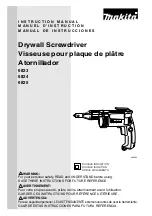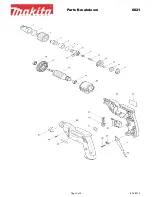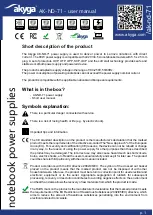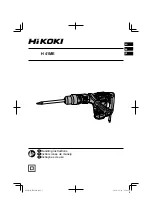
Page 25
The LAN interface is designed to meet LXI (Lan eXtensions for Instrumentation) version 1.4 LXI
Core 2011. Remote control using the LAN interface is possible using the TCP/IP Sockets
protocol. The instrument also contains a basic Web server which provides information on the
unit and allows it to be configured from a web browser. Simple command line control from the
browser is also possible.
13.2.1
GPIB Interface
The standard GPIB interface 24-way connector is located on the instrument rear panel. The pin
connections are as specified in IEEE Std. 488.1-1987 and the instrument complies with both
IEEE Std. 488.1-1987 and IEEE Std. 488.2-1987.
It provides full talker, listener, service request, serial poll and parallel poll capabilities. There are
no device trigger or controller capabilities. The IEEE Std.488.1 interface subsets provided are:
SH1, AH1, T6, L4, SR1, RL2, PP1, DC1, DT0, C0, E2.
The GPIB address of the unit is set from the system menu:
Settings can be changed from the System Menu (Menu > Remote Control Interfaces). The
present GPIB address is displayed. To change the address, use the spin-wheel to set the
desired address and then press the OK/Exit soft key.
The interface will operate with any commercial GPIB interface card, using the device drivers
and support software provided by the manufacturer of that card.
13.2.2
RS232 Interface
The 9-way D-type serial interface connector is located on the instrument rear panel. It should be
connected to a standard PC port preferably using a fully wired 9 way 1:1 male-female cable
without any cross-over connections. Alternatively, a 3 way cable can be used, connecting only
pins 2, 3 and 5 to the PC, but with links made in the connector at the PC end between pins 1, 4
and 6 and between pins 7 and 8, as shown in the diagram:
Most commercial cables provide these connections.
In addition to the transmit and receive data lines, the instrument passively asserts pins 1 (DCD)
and 6 (DSR), actively drives pin 8 (CTS) and monitors pin 4 (DTR) from the PC. This allows the
use of a fully wired 9-way cable.
The Baud Rate for this instrument is fixed at 9600; the other parameters are 8 data bits, no
parity and one stop bit. Flow control uses the XON/XOFF protocol, but because of the low
volume of data associated with this instrument it is very unlikely that flow control will actually be
invoked.
















































